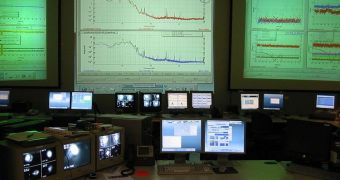The Laser Interferometer Gravitational-Wave Observatory (LIGO) has just received a new executive director, say experts from the California Institute of Technology (Caltech), in Pasadena, and the Massachusetts Institute of Technology (MIT), in Cambridge.
The two organizations are jointly managing the installation, which is searching for signs of gravitational waves. The project is supported with funds provided by the US National Science Foundation (NSF).
Together, the collaboration decided to name David Reitze as the new executive director of LIGO. At the same time, the expert received an appointment as a senior research associate at Caltech. He has been a visiting associate professor at the Institute since 2007.
Reitze held an appointment as a professor of physics at the University of Florida in Gainesville. He is replacing Caltech senior research associate in physics Jay Marx, who has been the executive director for LIGO since 2006. The latter will continue to work at the installation part-time.
The new official was the spokesperson for the LIGO Scientific Collaboration (LSC) between 2007 and 2011. This organization is a group of no less than 840 scientists from universities in the United States and 13 other countries. This team is responsible for processing LIGO data.
This massive installation was built in order to gravitational waves, which are ripples in spacetime proposed by Albert Einstein as a result of his Theory of General Relativity. Detecting these structures is tremendously complex, and the search has thus far been fruitless.
Other than LIGO, several other experiments have been prosed, most notably the Laser Interferometer Space Antenna (LISA). This was to be a partnership between NASA and the European Space Agency (ESA), but the former dropped due to budget cuts.
As such, the role LIGO plays in this search is becoming increasingly important, scientists say. “I'm really excited about joining the LIGO laboratory and Caltech and serving in the role of executive director,” Reitze says in a statement.
“In addition to the incredible science that LIGO will do, one of the main reasons I accepted the position was the outstanding quality and commitment of the LIGO laboratory staff,” the official went on to say.
During his earliest days as a research scientist, Reitze focused his attention on fields such as ultrafast optics and the development of high-power optical components and ultrafast lasers. Later on, the expert led the design effort for the input optics of Advanced LIGO, a detector to be inaugurated in 2014.
“Once Advanced LIGO is running, we'll continue to work closely with our European colleagues at GEO600 and Virgo as part of the new and growing global gravitational-wave network,” he adds.
“The Large Cryogenic Gravitational Wave Telescope in Japan is scheduled to begin operation soon after Advanced LIGO, adding a fourth detector to the network,” the expert explains.
“The global network will allow us to look at the underlying sources of gravitational waves in tandem with other types of astronomical telescopes – optical, radio, X-ray, gamma ray – to give a much better picture of the astrophysics of the most violent events in the Universe,” he concludes.

 14 DAY TRIAL //
14 DAY TRIAL //